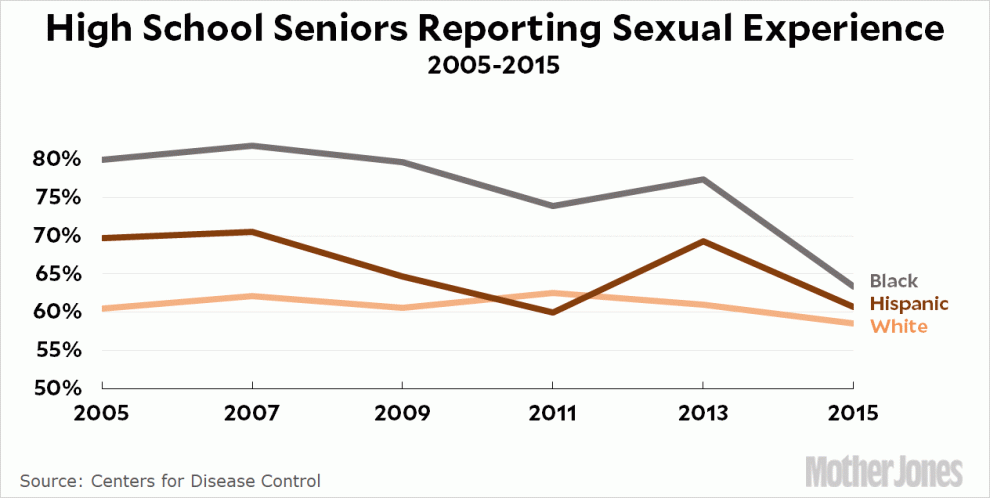
PeopleImages/Getty
Until now, sexting has been somewhat of a vague phenomenon, without much concrete data on how common it actually is in teen life. Experts have tried to pin down how many and how often teens participate in explicit text messaging, and have had a hard time reaching a consensus; over the years they’ve predicted that somewhere between 1.3 to 60 percent of teens have sexted—a wide margin by any standard.
But, a study published Monday in the journal JAMA Pediatrics finally gives us a clearer picture of what’s happening. A team led by researchers from the University of Calgary performed a meta-analysis of past major studies on sexting, and the group concluded that about 1 in 7 people under the age of 18 have sent a sext, and about an entire quarter of the teen population has received one. It also notes that about 1 in 8 report sharing a sext without the sender’s consent or having their own sext shared without consent.
“A sizable number of teens are engaging in sexting,” Sheri Madigan, an assistant professor of child development psychology at the University of Calgary and lead author on the study, tells Mother Jones. “It is becoming a normative component of teen sexual behavior and development.”

A simulated sexting conversation using early Renaissance artist Sandro Botticelli’s The Birth of Venus.
Wikipedia
Their analysis surveyed 39 independent studies conducted between 2009 and 2016, which in total include more than 110,000 participants.
In addition to pinpointing its prevalence among teens, the team found that sexting has, unsurprisingly, become more frequent in recent years and that older teens are more likely to sext than younger ones. Beginning in 2009, the number of teens who have sent a sext has increased by an average of 2.6 percent each year—and with each year a kid ages (between 12 and 17), the popularity of sending a sext increases, on average, by 3.7 percent, according to data Madigan shared with Mother Jones.
“[Meta-analyses] are really useful because, especially for something like sexting where it’s still somewhat of an emerging phenomenon…there’s going to be a variety of different people that have sampled a variety of different sources,” and meta-analyses combine those studies, Eric Rice, an assistant professor at the University of Southern California’s School of Social Work, tells Mother Jones. Rice was not involved in the study but his research is included in the 39 studies analyzed by the team.
One major limitation of this study (as with all meta-studies), the authors note, is that the results rely on different methods from several studies, which often aren’t consistent. For example, both Madigan and Rice point out, there isn’t a clear definition of what “sexting” actually is. Some researchers define it generally as the sharing of sexually explicit content, while others define it as the the sharing of personal nude pictures or videos.
Though sexting is a relatively recent trend—the term, for instance, was just added to the Merriam-Webster dictionary in 2012—the authors say they weren’t surprised by the results. Cell phone ownership among teens is “near ubiquitous,” the authors write. More than 9 out of 10 high schoolers own a cell phone, Madigan says, and about 40 percent of teens are sexually active. And with the real risk of nonconsensual sexting, both Madigan and Rice argue that sexting needs to be addressed in contemporary sex-education.
“Do you really want your images floating around in the universe forever? …This is a new digital sexuality that needs to be incorporated into sex education,” says Rice. “That’s why we’re doing this work.”

















